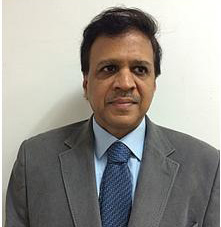- Home
- Medical news & Guidelines
- Anesthesiology
- Cardiology and CTVS
- Critical Care
- Dentistry
- Dermatology
- Diabetes and Endocrinology
- ENT
- Gastroenterology
- Medicine
- Nephrology
- Neurology
- Obstretics-Gynaecology
- Oncology
- Ophthalmology
- Orthopaedics
- Pediatrics-Neonatology
- Psychiatry
- Pulmonology
- Radiology
- Surgery
- Urology
- Laboratory Medicine
- Diet
- Nursing
- Paramedical
- Physiotherapy
- Health news
- Fact Check
- Bone Health Fact Check
- Brain Health Fact Check
- Cancer Related Fact Check
- Child Care Fact Check
- Dental and oral health fact check
- Diabetes and metabolic health fact check
- Diet and Nutrition Fact Check
- Eye and ENT Care Fact Check
- Fitness fact check
- Gut health fact check
- Heart health fact check
- Kidney health fact check
- Medical education fact check
- Men's health fact check
- Respiratory fact check
- Skin and hair care fact check
- Vaccine and Immunization fact check
- Women's health fact check
- AYUSH
- State News
- Andaman and Nicobar Islands
- Andhra Pradesh
- Arunachal Pradesh
- Assam
- Bihar
- Chandigarh
- Chattisgarh
- Dadra and Nagar Haveli
- Daman and Diu
- Delhi
- Goa
- Gujarat
- Haryana
- Himachal Pradesh
- Jammu & Kashmir
- Jharkhand
- Karnataka
- Kerala
- Ladakh
- Lakshadweep
- Madhya Pradesh
- Maharashtra
- Manipur
- Meghalaya
- Mizoram
- Nagaland
- Odisha
- Puducherry
- Punjab
- Rajasthan
- Sikkim
- Tamil Nadu
- Telangana
- Tripura
- Uttar Pradesh
- Uttrakhand
- West Bengal
- Medical Education
- Industry
Trachoma eliminated among Indian children: AIIMS doctors

New Delhi: Trachoma, a leading cause of infectious blindness, has been eliminated among children in India, AIIMS doctors claimed.
The doctors from the Dr Rajendra Prasad Centre for Ophthalmic Sciences, AIIMS who conducted a survey in several hyper endemic districts across the country to assess the burden of trachoma will soon submit the report to the Union Health Ministry.
“We can say that trachoma is no more a public health problem. The survey report will be submitted to the Ministry of Health by the end of this month,” said Dr Atul Kumar, chief of the centre.
Trachoma is considered as “eliminated” when its prevalence drops to less than five per cent among children aged between 1 to 9 years, as per the criteria laid down by WHO, Kumar said.
The survery also included adults, but the data about the prevalence of trachoma among adults is yet to be analysed, said Dr Praveen Vashist, HOD community opthalmology.
In the 1950s trachoma was one of the prime causes of blindness in states like Punjab, Rajasthan, Gujarat, Haryana, Western Uttar Pradesh and Delhi.
“These states were labelled as hyper endemic states as the prevalance of the infection among children was more than 50 per cent in these states,” Dr Vashist said.
Government then initiated strong measures which included treatment with antibiotic, surgeries and also sensitising people about preventive measures like facial clealiness, availability of clean water and maintaining hygiene.
Subsequently, surveys were conducted in 1971-74, 1986-89 and 2006-2007, under the National Programme for Control of Blindness, to assess the burden of the disease which kept showing a declining trend.
Meanwhile, in 2010 government received information about high prevalence of trachoma in Nicobar islands following survey was carried out which found more than 50 per cent of the children affected by the disease.
“Mass treatment was given for three years and awareness programmes were held and a recent survey found that the prevalence has dropped below 5 per cent,” Dr Vashist said.
Trachoma is a chlamydial infection whhich happens due to lack of hygiene, unclean water supply and can spread by contact with eye, nose, or throat secretions of a persion suffering with the disease or indirectly via flies.
According to recent estimates, trachoma is endemic in 57 countries of the world and India is one of the five countries accounting for nearly half of the global burden of active trachoma.


